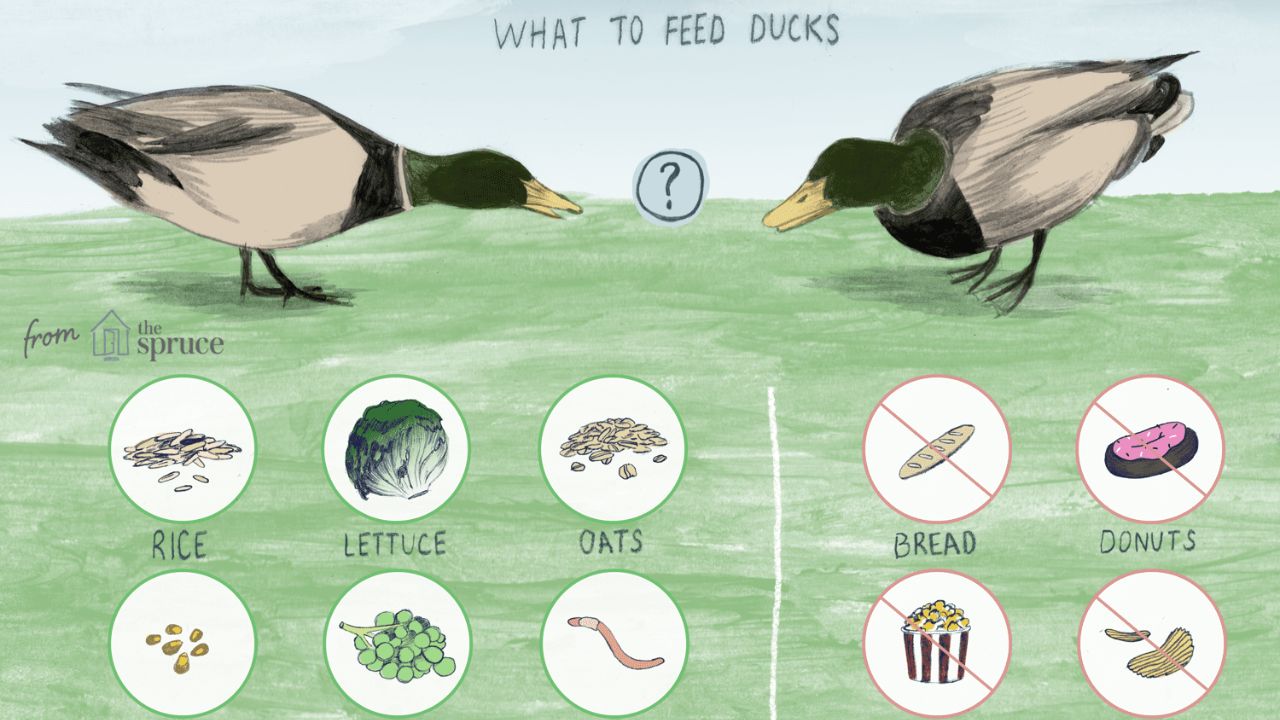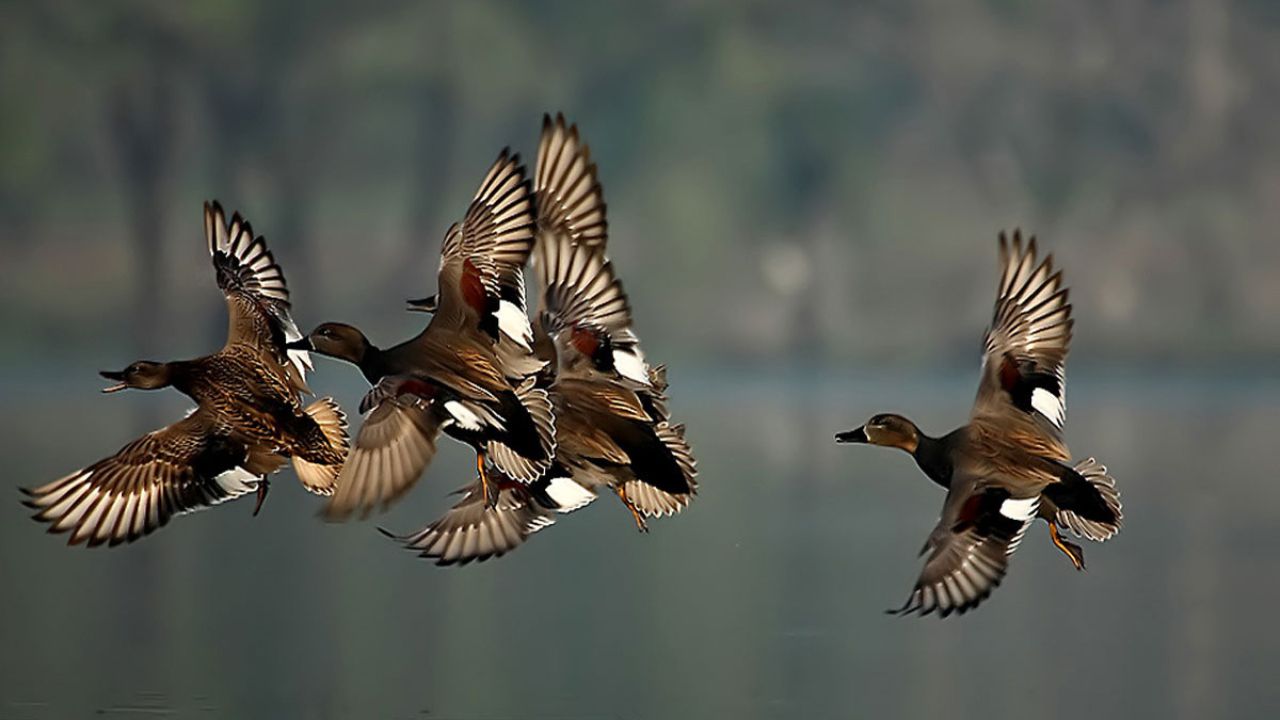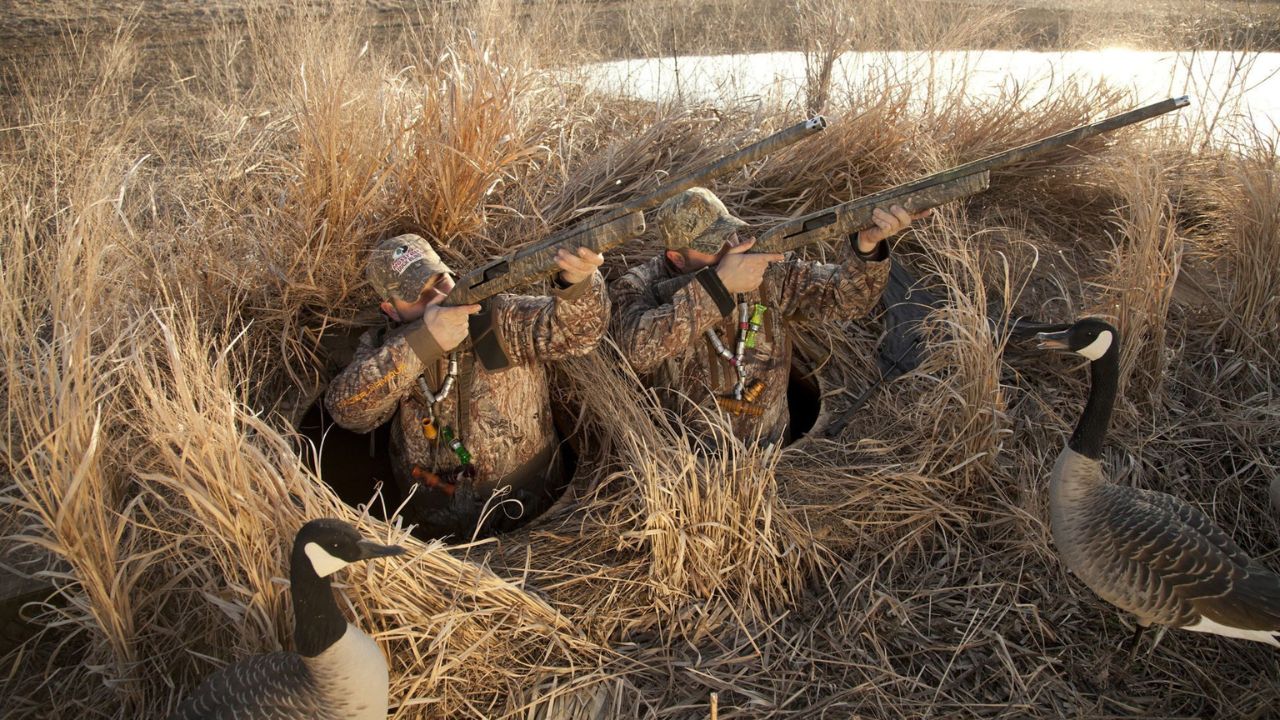The best wind direction for duck hunting is a tailwind. It lures ducks towards decoys and blinds, enhancing shooting opportunities. Hunters should position themselves to capitalize on tailwinds for increased success.
Duck Behavior
Ducks rely on keen senses, particularly smell and vision, to detect threats. They’re sensitive to changes in weather, including wind direction, which influences their flight patterns.
Ducks prefer to land into the wind, as it allows for a slower, safer descent. Hunters must consider how their actions and environment affect duck behavior to ensure they remain undetected. By understanding duck behavior, hunters can anticipate movements, adjust their strategies, and increase their chances of a successful hunt.
What Is the Best Habitat for a Duck?

The best habitat for a duck typically includes a combination of water, vegetation, and open space. Wetlands such as marshes, swamps, and ponds provide ample food sources for ducks, including aquatic plants, insects, and small fish. Additionally, wooded areas near water bodies offer nesting sites and protection from predators.
Ducks prefer habitats with a mix of shallow and deeper water for foraging and nesting, along with vegetative cover for shelter and nesting materials. A diverse habitat ensures access to food, shelter, and breeding sites, making it ideal for duck species’ diverse needs.
What Conditions Are Best for Duck Hunting?
The best conditions for duck hunting typically include calm weather with light to moderate winds. Overcast skies or light rain can improve hunting success as ducks are more active and less wary. Early morning or late afternoon hours are prime times when ducks are most active.
Hunting near water sources such as marshes, ponds, or rivers, where ducks congregate for feeding and resting, increases the likelihood of a successful hunt. However, local regulations, habitat conditions, and duck behavior should also be considered for ethical and sustainable hunting practices.
Optimal Wind Directions
The best wind direction for duck hunting is crucial. A light to moderate breeze from behind or the hunter’s side is ideal, allowing ducks to approach decoys naturally.
Crosswinds are advantageous, encouraging ducks to approach from the side, while headwinds can make them fly higher and faster.
Wind speed also matters, with light to moderate winds preferred for masking sounds and concealing the hunter’s position.
By identifying and exploiting the best wind directions, hunters may increase their chances of having a successful hunt by establishing ideal circumstances for duck behavior and shot possibilities.
Where Do Ducks Go When It Is Windy?

When it’s windy, ducks typically seek shelter in areas that protect them from the harsh winds. These areas include coves, marshes, or the leeward sides of islands or shorelines where the wind is less intense. Ducks may also gather in dense vegetation or along the banks of rivers or lakes, where they can find some relief from the wind.
Some ducks, particularly diving ducks, may dive underwater to escape the effects of strong winds. By taking cover in these areas, ducks may save energy and lessen their chances of being tired or blown off course.
Do Ducks Fly With the Wind or Against It?
Ducks typically prefer to fly with the wind rather than against it. Flying with the wind reduces their energy expenditure, as they can glide more easily and maintain a steady course.
Ducks are capable of adjusting their flight patterns to navigate in various wind conditions, utilizing their agility and wing strength to compensate for wind direction when necessary. Overall, flying with the wind allows ducks to conserve energy and travel more efficiently, especially during long migrations or when navigating over large bodies of water.
What Direction of Wind is Best for Ducks?

Ducks generally favor tailwinds, which blow in the same direction as their flight path. Tailwinds provide additional lift, making it easier for ducks to maintain their speed and conserve energy during flight. This is especially advantageous during migration.
Ducks are adaptable and can navigate in various wind conditions. Tailwinds facilitate efficient movement, aiding ducks during long-distance flights and reducing the effort needed for foraging and other activities.
While tailwinds are preferred, ducks can adjust their flight patterns to accommodate different wind directions, using their agility and wing strength to navigate effectively in changing conditions.
Wind Speed Considerations
Wind speed is crucial in duck hunting. Ideally, hunters seek wind speeds of 5-15 mph. Gentle breezes encourage ducks to fly low, providing better shooting opportunities. Higher winds can make shooting more challenging and may cause ducks to fly faster, reducing accuracy.
Light winds can help conceal hunters’ movements and decrease the chances of ducks spotting them. Conversely, calm conditions may lead to ducks being more cautious. Successful hunting requires an understanding of wind speed and how it affects duck behavior. This allows hunters to modify their tactics in order to increase the likelihood of a successful hunt.
Adapting to Changing Conditions in Duck Hunting

Adapting to changing conditions is vital for successful duck hunting. Hunters must monitor weather forecasts, water levels, and duck behavior. Flexibility in decoy placement, calling techniques, and blind setups is key. During adverse weather, such as high winds or heavy rain, adjusting hunting locations and strategies can improve success.
Being prepared with appropriate gear and camouflage for varying conditions ensures hunters remain comfortable and undetected. Hunting enthusiasts who remain flexible and sensitive to changing conditions may maximize their chances of a successful hunt and improve their entire hunting experience.
Using Wind to Your Advantage
Leveraging wind direction and speed is essential in duck hunting. Positioning decoys and blinds downwind from where ducks are expected to approach increases the chances of successful shots. Using the wind to carry calls and conceal movements helps hunters remain undetected.
Hunters must also anticipate how wind patterns may affect duck behavior, adjusting their strategies accordingly. While tailwinds facilitate easier shooting opportunities, crosswinds may require modified shooting techniques.
Hunters can enhance their effectiveness in attracting and harvesting ducks, ultimately leading to more successful hunting outings, by understanding and harnessing the power of wind.
Fine-Tuning Your Approach
Every hunting situation is unique, requiring hunters to adapt their approach accordingly, while there are general guidelines for the best wind direction for duck hunting.
Fine-tuning your approach to duck hunting involves meticulous planning and adaptability. Study duck behavior, weather patterns, and habitat to select optimal hunting spots.
Adjust decoy spreads, calling techniques, and blind setups according to changing conditions. Utilize wind direction to your advantage, positioning decoys and blinds strategically. Remain patient and observant, ready to modify tactics as needed.
Conclusion
Achieving success in duck hunting isn’t just about skill and gear; mastering wind direction can significantly boost your odds. Understanding how wind influences duck behavior and adjusting your strategy accordingly can be the key to a fruitful hunt. By paying close attention to wind patterns, adapting to changing conditions, and fine-tuning your hunting strategies, you can maximize your hunting success and enjoy a rewarding and fulfilling hunting experience.
FAQ
How Does Wind Direction Affect Duck Behavior?
Wind direction significantly influences duck behavior. Ducks prefer flying into the wind or with a tailwind, aiding their flight efficiency. Additionally, wind direction impacts landing patterns, as ducks tend to land facing into the wind for better control. Understanding wind patterns helps hunters anticipate duck movements for successful hunting.
Can Strong Winds Affect Duck Hunting Success?
Strong winds can impact duck hunting success. While ducks may still fly in windy conditions, they tend to fly higher and faster, making shooting more challenging. Additionally, strong winds can disrupt decoy spreads and make it harder for hunters to remain concealed, reducing their chances of a successful hunt.
What Role Does Concealment Play in Duck Hunting?
Concealment is crucial in duck hunting as it prevents ducks from detecting hunters. Hunters use blinds, camouflage, and natural cover to blend into their surroundings, remaining unseen by ducks. Effective concealment increases the chances of ducks approaching close enough for a successful shot, enhancing overall hunting success.
What Is the Safest Position for Duck Hunting?
The safest position for duck hunting is a well-concealed blind located away from popular flight paths and with a clear line of sight. Hunters should ensure they have a safe backdrop for shooting and maintain proper firearm safety protocols at all times to prevent accidents and ensure a safe hunting experience.
What Is the Most Common Duck to Hunt?
The most common duck species hunted in North America is the mallard (Anas platyrhynchos). Mallards are a favorite game bird among hunters because of their abundance, unique plumage, and demanding behavior. Its extensive distribution and adaptability make it a prominent target during the duck shooting season.

